10 Mothers-in-Law Who Know How to Stir the Pot

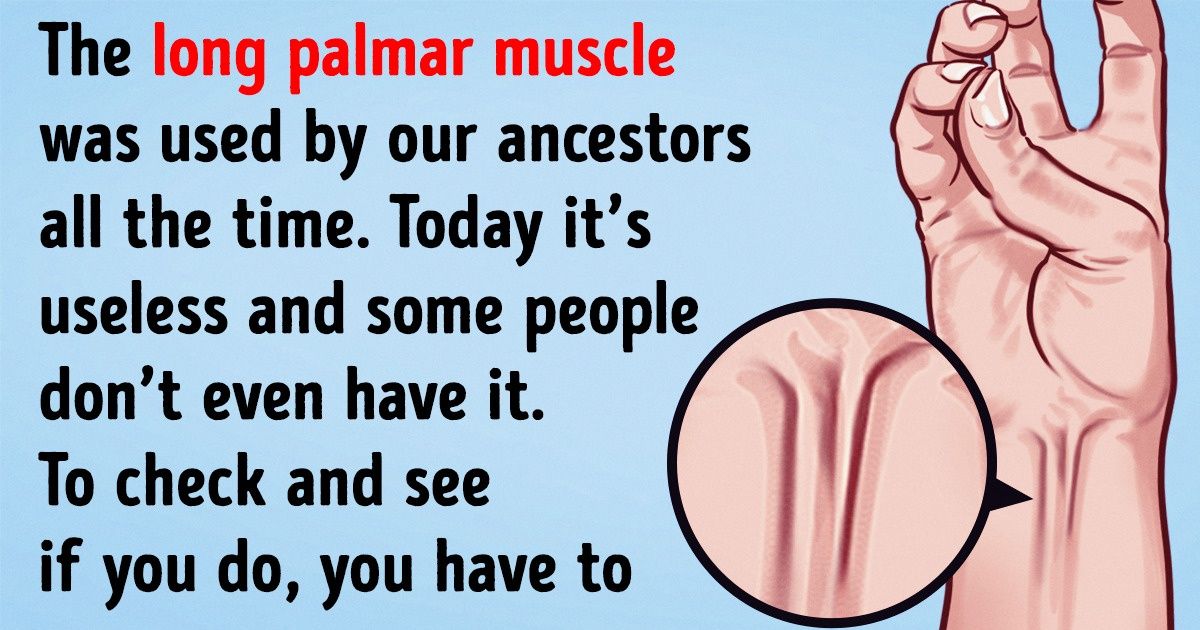
It’s clear that our body did not get to look the way it does today without some kind of change. As you might know, it’s actually the result of years and years of what we call evolution. Because our ancestors changed their daily habits in order to adapt to some changes in their environment, throughout the years their body responded by adapting to their new needs. Ever since prehistoric times, it has not stopped evolving, changing, and adapting. But the funny thing is that no matter how much time has passed, there are still some parts of our body that are not very useful for us with our current lifestyle. What they really do, is reveal tons of information about our past...
Bright Side wants to introduce you to 10 parts of the human body that might have been useful to our ancestors, but today they are not very useful anymore, and our body knows it.
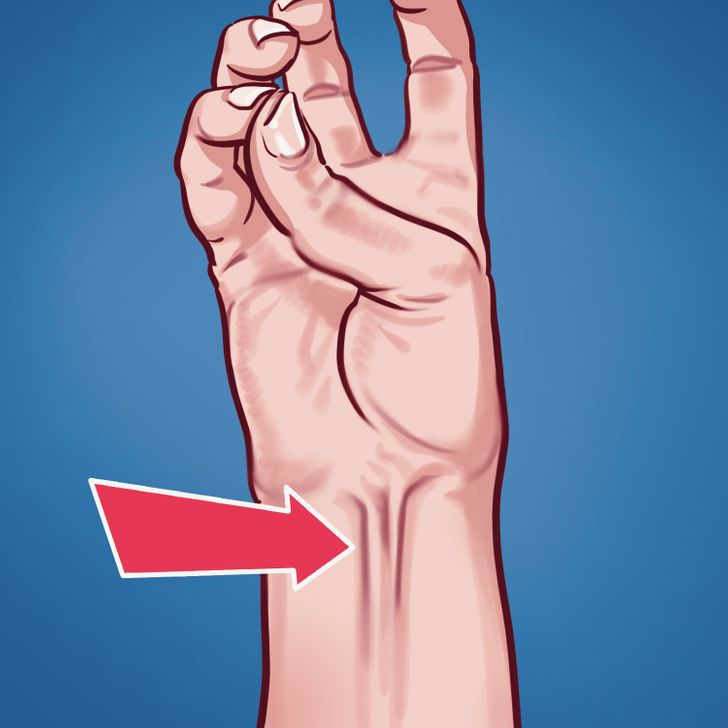
Some people might not have something called the long palmar muscle, and they could even have lived a long time without knowing this about themselves. But don’t worry if you belong to this group of people, you’re not missing out on anything! Actually, even those who have it might be unaware of its existence, and for good reason. But before explaining why, let’s go over how you can figure out if you have this muscle. It’s very easy: try touching your little finger to your thumb while moving your palm toward your face. If you do have it, you should be able to see the muscle rise, a bit like a tendon in your arm.
If you are one of the “privileged” ones from who has this muscle, you’re probably wondering what it’s used for... Well, nothing. All evidence points to the fact that it’s actually just something we’ve inherited from our ancestors. Of course, they used this muscle all the time. But ever since using thumbs became a thing (a long time ago), the long palmar muscle became useless. Except that it’s still there, in the same place, doing nothing. It’s just sort of a vestige.
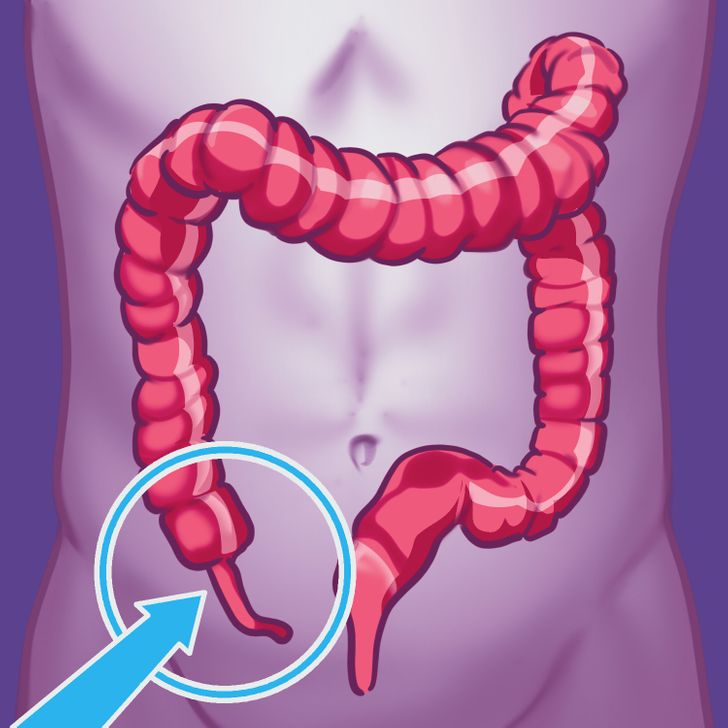
Most of us realize the existence of our appendix only when it swells and leads to the famous appendicitis. Of course, that’s far from being a good memory... Since after removing it, people just carry on with their lives as if nothing ever happened, it was thought to have become useless. But actually studies have shown that the appendix protects your immune system by hosting healthy bacteria that regulate your intestinal flora.
That might sound a bit vague, so let’s break it down a bit. When we have certain types of diseases, like gastroenteritis, that our body wants to clean up at all costs. That’s when it starts to get rid of bacteria, but it does so without distinguishing the good bacteria from the bad. And as you might have understood already, not all of them are “bad guys” in this story, and our stomach actually needs bacteria to work properly. So they don’t get washed away with the others, the good guys are supposed to take shelter in the appendix and, when everything goes back to business as usual, they continue growing normally. Sure, all that sounds useful, but, in reality, today we use our appendix far less than our ancestors did when their diet was rougher and had to perform different digestive functions.
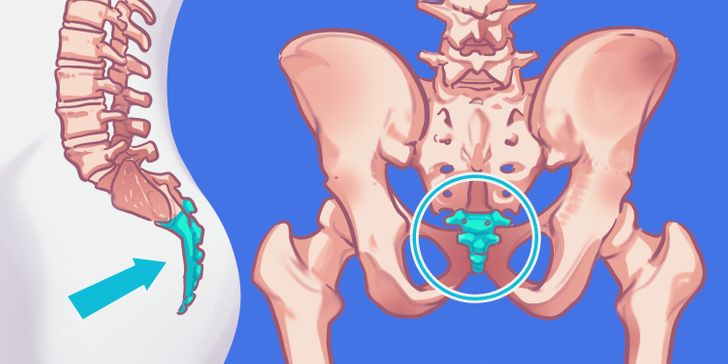
Our coccyx is located on our spine and kind of gives away something a bit embarrassing: our ancestors had a tail! Yup, and it was a long tail. It used to perform the important function of helping them to maintain balance and mobility, but as our species learned to walk upright, it lost its purpose and now only has the secondary function of acting as a link between muscles, tendons, and ligaments. Well, that might explain why it hasn’t completely disappeared from our body together with the tail.
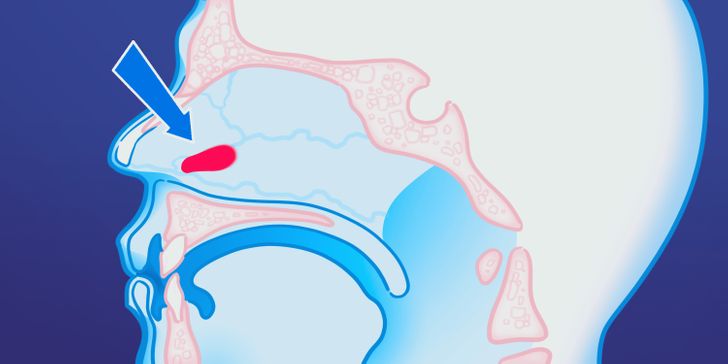
The vomeronasal organ is considered to be an auxiliary organ that is related to your sense of smell. It is located in the nasal cavity, so basically inside your nose. Many animal species have it, but actually, in our species it’s nothing more than a vestigial organ, a sort of “leftover” from evolution. Scientists have not been able to find evidence of any active sensory neurons like those animals have, so that they can properly use this part of their bodies.
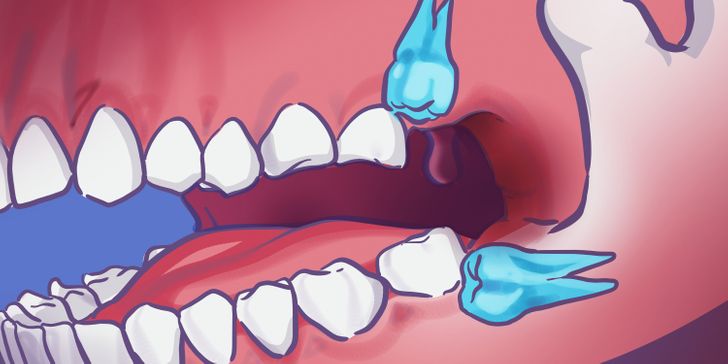
Wisdom teeth might be the teeth we are least likely to miss when we’re at the dentist for them to be removed. Noticing their presence is usually bad news, because it means that they are disturbing something. And while they might be a hassle for us, they were very important to our ancestors. They used them to grind up plant tissue.
In fact, some studies claim that the skulls of our ancestors had larger jaws and more teeth. As human eating habits changed, our jaws evolved to become smaller. It seems that the third molars didn’t get the memo saying that there was no room for them in our small mouths anymore... They just keep on growing, even though they have no function. How annoying! And actually, they are often more harmful than anything else, so dentists choose to remove them.
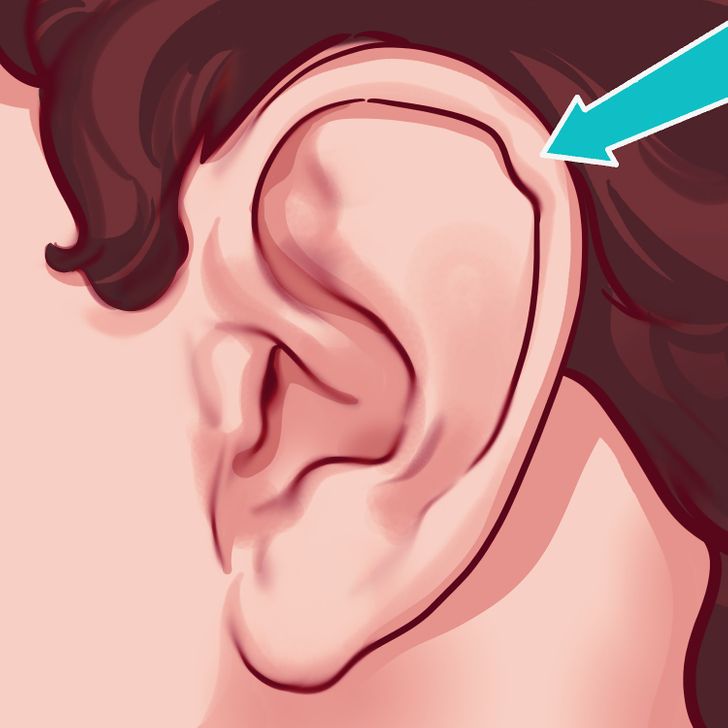
If you have Darwin’s tubercle, you can easily spot it in your ear in the small part where the helix thickens. You can have this feature on one or both ears, and the popularity of its name is due to the fact that Charles Darwin was the first to make mention of it in a publication. The now popular scientist explained that it is something we inherited from our ancestors and it shows the common ancestry we have with primates, who have pointy ears.
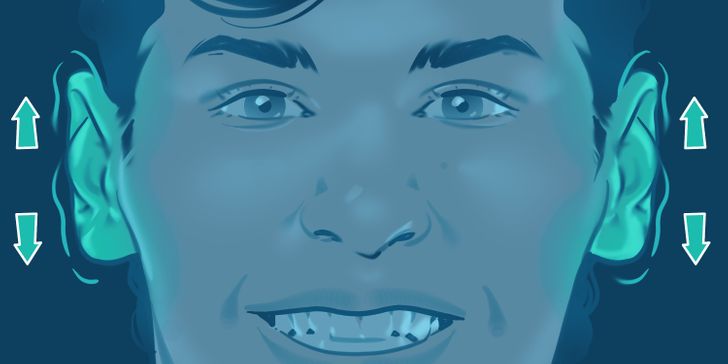
Some monkeys have muscles in their ears so they can move them around and be aware of any sound that could reveal a nearby threat. However, our species and primates, like the orangutan, have such poorly developed ear muscles that these muscles do not work and have no biological reason to do so.
Yet we can find people who have an uncanny ability, if not a superpower, to move their ears easily. Although this might be an amazing thing to be capable of, it is clearly far from necessary for our survival the way it is for monkeys.
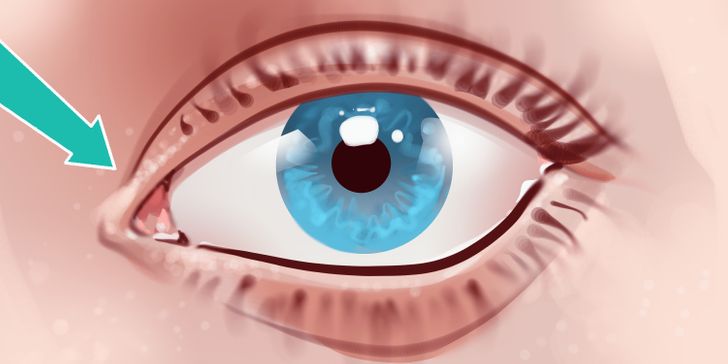
This is a super small fold of tissue that is found in the inner corner of the eye. People tend to confuse it with the lacrimal gland, the part of the eye that creates tears. The plica semilunaris is a vestige of a third eyelid, known as the nictitating membrane, which you can find in other animals, like birds for example. Today, this part of our body just helps us rotate the eyeball and drain our tears.
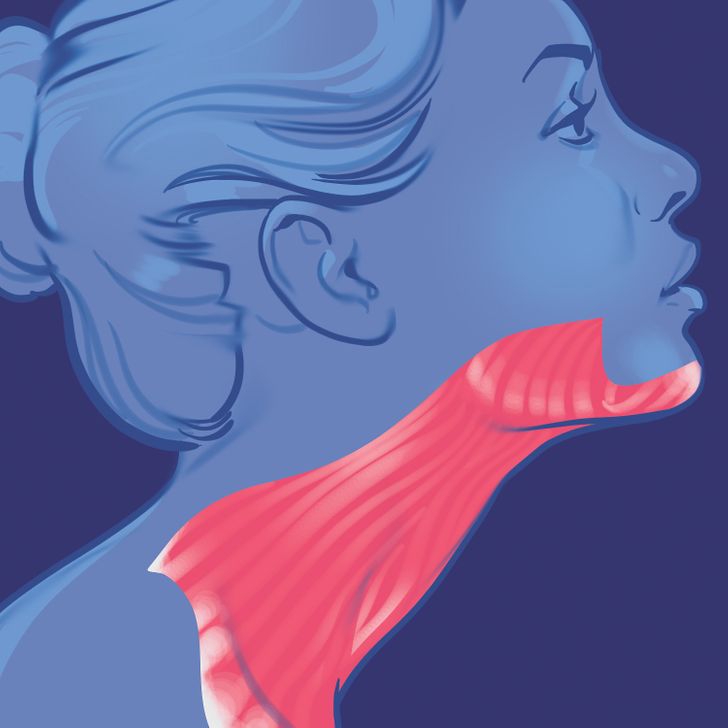
Can you see it? Yup, it’s a superficial muscle that’s in the front of our neck and that reaches our chest. Is it useful? Not really, no. It’s mostly aesthetic and it can help make some facial expressions, especially in our mouth, more noticeable. When it contracts, it makes the corner of the mouth move down and that makes us look “sad.” It also helps to open our mouth and jaw a bit more than if we didn’t have it. It’s speculated that it is actually a vestige of the panniculus carnosus (a fancy name for the thing that makes animals twitch their whiskers) that some animals use for clearer purposes, like preventing birds and insects from perching on them.
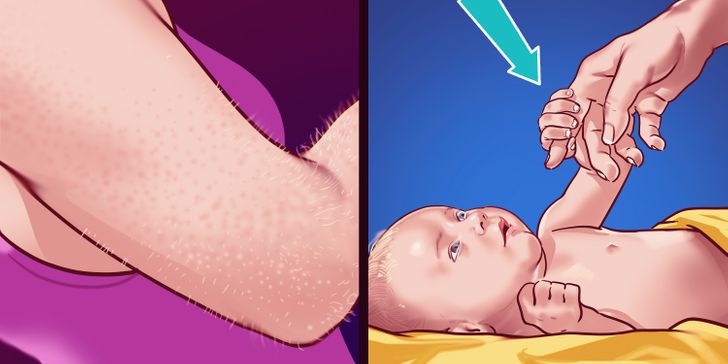
We not only have organs left behind by evolution, but also a few behavioral responses that our bodies use in specific situations. Most of the time they are spontaneous, but not necessarily useful. Think about goosebumps, for example, when you’re feeling cold or tense. For our ancestors, pulling up body hair was a useful ability to have if they wanted to look bigger and scare away predators. That’s something cats still do, by the way. Lifting hair in that way also keeps animals warmer. But today humans have lost a great deal of that hair and don’t really need that skill anymore, so it has become obsolete.
Even the palmar grasp reflex in babies who are a few months old, who hold tightly to a finger or object that touches their palm, probably comes from a reflex we inherited from our ancestors. We still see newborn animals that make use of this grasp reflex to increase their chances of survival when being transported in their mother’s fur.
Are you one of those people who can move their ears? Were you able to find Darwin’s tubercle on your ears? How about the long palmar muscle? Feel free to share what other outdated parts you’ve found in your own body, including your wisdom teeth.











